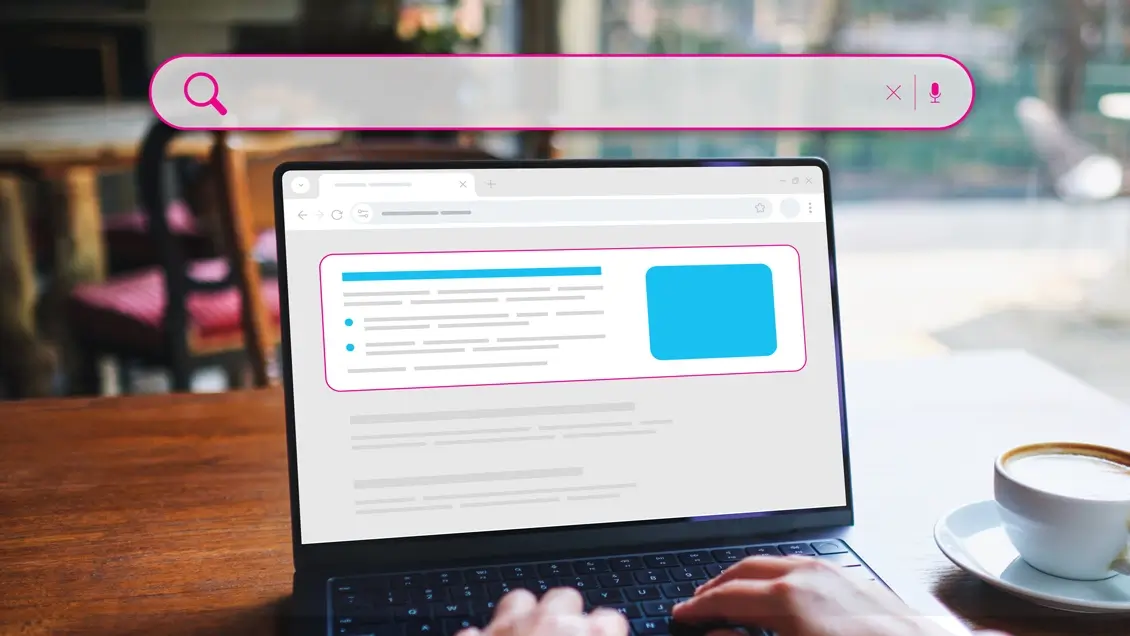What is AEO and why it matters
If you’ve noticed Google’s new AI Overviews or how ChatGPT, Gemini and Perplexity summarize web content in answers, you’ve seen AEO in action. These platforms are doing more than linking to websites. They’re providing a short synopsis of relevant content to quickly answer your question.
That means the rules of visibility are changing. Traditional SEO helps your page rank high. But AEO helps your content be the answer itself, making your brand an authoritative source that AI engines cite, quote or summarize.
At Trone, we see AEO as a critical bridge between classic SEO and the future of AI-powered discovery. Brands that adapt now will own tomorrow’s search visibility.
AEO vs. SEO: What’s the difference?
Goal | |
| Traditional SEO Rank higher in organic search results | Answer Engine Optimization (AEO) Be cited or summarized directly in AI responses |
Position Targeted | |
| Traditional SEO Position 1 | Answer Engine Optimization (AEO) Position 0 (AI Overviews, Featured Snippets) |
Optimization Focus | |
| Traditional SEO Keywords, backlinks and on-page SEO | Answer Engine Optimization (AEO) Clarity, structure and machine readability |
Success Signal | |
| Traditional SEO Click-throughs | Answer Engine Optimization (AEO) Citation or inclusion in AI summaries |
In short: SEO gets you seen. AEO gets you quoted.
How to optimize for AEO
Optimizing for AEO means structuring your content for both humans and machines. Here are the three key pillars Trone recommends for clients adapting to this new landscape:
1. Lead with the answer
Front-load your content with a short, clear summary, ideally 40–80 words, that directly answers your audience’s main question. This “Quick Answer” format helps AI systems extract your response cleanly and positions your brand as the expert voice.
AEO best practices:
- Place a concise answer in the first 1–2 paragraphs.
- Label it clearly (“Quick Answer,” “In Short,” “Key Takeaways”).
- Use bullets, numbered lists or tables to increase clarity and extractability.
2. Build authoritative content clusters
AI models favor trustworthy, context-rich sources. To rank in AI Overviews or featured snippets, your site needs:
- Demonstration of E-E-A-T: Page quality ratings consider Experience, Expertise, Authoritativeness and Trustworthiness of the brand and website providing the content.
- Strong topical authority: Deep, interconnected content that fully explores your subject matter.
- An established foundation of SEO best practices: Most AEO results still come from pages already ranking on Page 1.
Trone helps brands build these high-value clusters, connecting blog content, FAQs, guides and case studies into a cohesive topical web presence that AI engines can confidently reference.
Structure for machines
Search engines and AI systems rely on clarity. Trone’s AEO approach includes:
- Question-answer subheadings: Frame H2s and H3s as common search questions (Like “What Is AEO?” and “How Does It Work?”).
- Readable language: Write short, simple sentences that communicate one idea at a time.
- Schema markup: Implement FAQ, How-To and Article schema to give search engines more context.
- Technical health: Fast load times, mobile optimization and clean crawl paths all signal that your site is ready for AI visibility.
Why AEO is a competitive advantage
AI-driven search isn’t replacing SEO. It’s redefining what success looks like. Brands that master AEO now will:
- Become the source of truth in their category.
- Build trust through consistent, cited authority.
- Future-proof their visibility as generative AI becomes the new search layer.
At Trone, we help businesses blend data-driven SEO strategy with AEO structure, content clarity and technical expertise. It’s not about chasing algorithms. It’s about earning authority in an AI-first world.
Ready to lead the conversation?
AEO is still emerging, but the brands showing up in AI Overviews today are the ones shaping tomorrow’s search results.
Trone can help your business build the kind of content ecosystem that both people and AI trust. Contact us to discuss how to make your brand the answer to your audiences’ questions.



